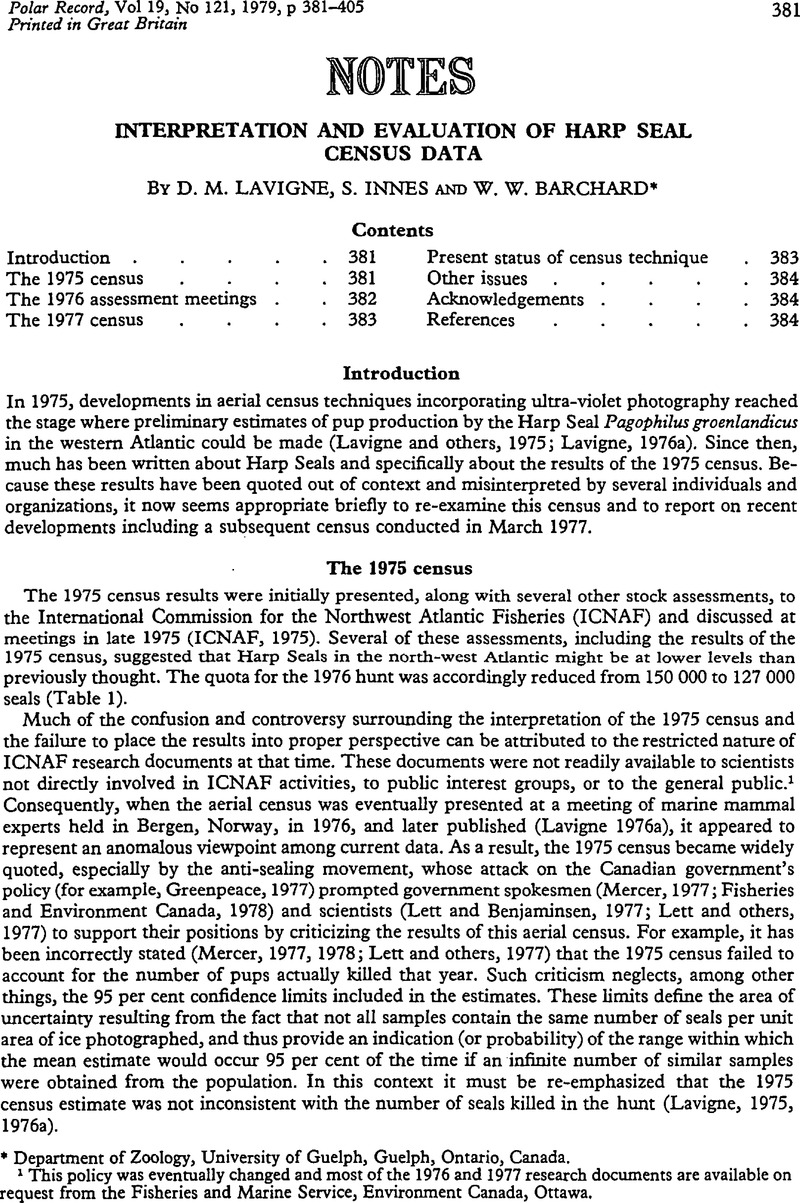Crossref Citations
This article has been cited by the following publications. This list is generated based on data provided by Crossref.
Stenson, G. B.
Myers, R. A.
Hammill, M. O.
Ni, I- H.
Warren, W. G.
and
Kingsley, M. C. S.
1993.
Pup Production of Harp Seals, Phoca groenlandica, in the Northwest Atlantic.
Canadian Journal of Fisheries and Aquatic Sciences,
Vol. 50,
Issue. 11,
p.
2429.
Stewart, Robert E. A.
and
Lavigne, David M.
2001.
Memories.
Marine Mammal Science,
Vol. 17,
Issue. 4,
p.
965.



